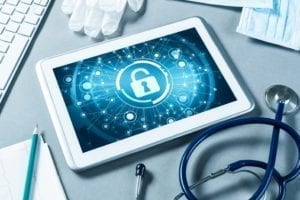I must admit that when I read the news about Microsoft introducing Surface Computing I really didn’t look at it from a health care perspective. I could think of 100 cool applications for the technology, but I honestly hadn’t considered it for the health care field. Of course, leave it to Dr. Bill Crounse, Microsoft Health Care blogger to point out the advantages of surface computing in healthcare.
Here’s a quote from his post on Microsoft Surface Computing in Health Care:
Yesterday, Microsoft officially launched the first commercial product from a group and technology known as Microsoft surface computing. The product is called Milan; a coffee-table sized PC that takes touch screen technology to entirely new levels and gives users a highly interactive experience with all things digital. For now, you’ll be seeing the technology in business environments such as hotels, casinos, and retail establishments. You can read more about that here:
I first told you about surface computing last July when I met with colleagues at Microsoft Research to produce a video segment for my House Calls for Healthcare Professionals series. In that video, Dr. Eric Horvitz and surface computing guru, Andy Wilson, and I talked about the technology and possible implications for the healthcare industry. At the time Andy’s work was going under the code name Play Anywhere. My head was literally spinning with ideas on how this new user interface could be used in radiology, physical therapy, anatomical pathology, and other disciplines. It also occurred to me that this new way to interact with a computer, manipulate screen images, and navigate through data could be immensely important to clinical work-flows demanding a more hands-free, no-touch solution such as might be desirable during surgery or certain medical procedures.
I think one area that he didn’t seem to mention, but he’s probably considered is interaction with patients. I could imagine the day that a surface computing tabletop is found in every exam room. The doctor could roll this table over to the patient and the doctor and patient could interact with all sorts of patient education. When diagnosing a hernia for example, they could show anatomical drawings or videos that actually show what causes a hernia and the process for fixing it. They could draw on the table as they describe the medical condition. Then, the patient could have the video that was shown by the doctor sent straight to their phone so they can take it home and show their family. Would be pretty neat.
I must admit that as I read about this technology I remembered a video I posted on my technology blog that showed a real life application of multiple inputs on a table top. I was amazed at the technology six months ago and I’m still amazed now. Take a look.














Two great links on Surface computing:
Popular Mechanics (7/2007)
http://www.popularmechanics.com/technology/industry/4217348.html?page=1
TED & Jeff Han
http://www.ted.com/index.php/talks/view/id/65
One of the key areas that this would be very handy, especially in hospitals, would be patient services, such as ordering movies, nurse call systems, patient surveys, ordering meals and things like that.
This technology would be well suited for the medical field all the way around. It’s amazing. I am anxious to see it come to fruition.
I saw another video on this technology on youtube. There is another company that has been building this type of interface for the military since the mid-80’s. Very cool stuff.
Interactive applications running on touch-tables and other touch-enabled displays would be great visual tools for medical professionals to use when discussing health issues, explaining surgery procedures, or reviewing the results from 3D imaging tests.
My hunch is that information shared with patients in this manner most likely will help patients make better sense of their health concerns, and might also increase the likelihood of treatment compliance.
I came across the Microsoft surface being used in many places recently like retail outlet, photo shops etc. I saw one article that details the features and spec. It also had a couple of video links. Anyone interested could watch it below:-
http://www.kanbal.com/index.php?/Internet-Technology/the-surface.html